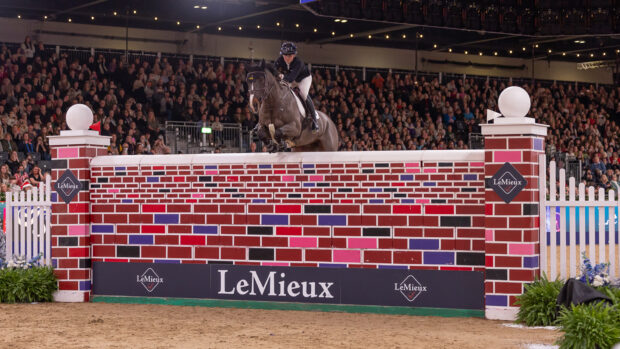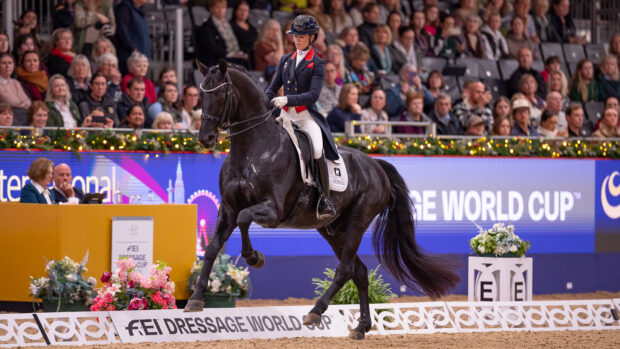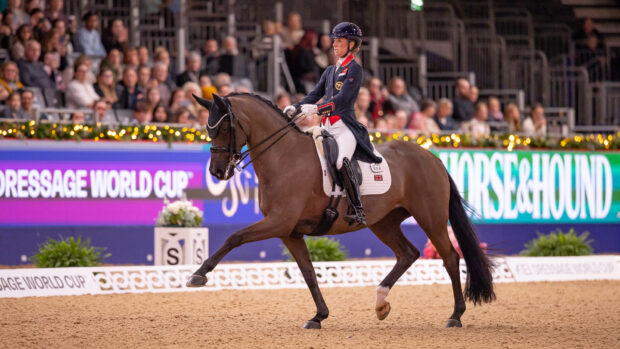Natasha Baker is a three-time Paralympian, with six Paralympic gold medals to her name, plus European and world championship titles. She is also an equestrian commentator.
There’s no denying that Britain is not where it used to be in the para dressage world order. There are several things we must address to change this, one being the classification system that determines the grade in which a rider competes.
I was classified into what is the current grade III when I was 12 or 13, and as my disability is “confirmed” and not degenerative, I haven’t been reclassified in the 20 years since.
London 2012 put our sport in the limelight, with many people seeing it for the first time and wanting to be involved, which is fantastic. But the new wave of riders coming through are being classified under a different process, while many of us who have been in the sport a long time are not being reclassified.
There is now a completely new panel of classifiers – of FEI-approved health professionals – and the process has changed. When I was classified, riding wasn’t taken into account; just various tests on a bed for strength and coordination. Now, they watch you ride, which is a significant change. How can this be fair?
All international para dressage athletes should be reclassified in a fair way, by the same panel and using the same process. For confirmed riders like me, this wouldn’t need to be repeated as often as for people with a degenerative or changing disability, but we should be reclassified every five years, as we all change over time.
Classification is hard to get right. It involves prescriptive tests but classifiers might interpret things differently, like judges. Riders have good and bad days, too, which affect their ability.
There will always be some people who are more disabled than others in the same grade, but currently there is a huge disparity. We are seeing vast differences in ability level within grades, and some huge variation in scoring. We must spark a conversation, and make classification as fair as possible.
We need investors
Horsepower has also moved on so much since I started in the sport; if I had my amazing London 2012 and Rio 2016 gold medallist Cabral now, I’m not sure he would stand up to the level.
We need super-talented horses to compete with the best, but para riders face more challenges to achieve this than able-bodied riders.
In able-bodied dressage, a rider might breed or produce a horse from a young age, but that isn’t possible for most para riders, especially in the lower grades. It means we have to find more established horses – for example, I got my top horse Keystone Dawn Chorus (Lottie) when she was eight – but this automatically creates a higher price tag.
We rely on investors to come into the sport, such as my brilliant owners Christian Landolt and Joanna Jensen. This is not easy, because we don’t win much prize money.
So for owners, it is about buying into the rider and their story. This means riders need to put themselves out there, to build a brand, to network and educate people who are interested in coming into the sport. That is not easy for everyone to do. But it’s a must to succeed in the sport as it is today.
Looking ahead
I’m looking forward to the European Para Dressage Championships in September. But with my baby due later this month, I will be heading out to the Europeans to commentate rather than ride. My big competitive goal with Lottie is the Paris Paralympics in 2024, and it’s coming around fast.
● Do you agree with Natasha? Have you noticed a big disparity? Let us know your thoughts at hhletters@futurenet.com, including your name, nearest town and county for the chance to have your views published in a future issue of Horse & Hound magazine
- This exclusive column will also be available to read in Horse & Hound magazine, on sale Thursday 13 April
You may also be interested in…

The Horse & Hound Podcast: episode three – Natasha Baker | Vet advice: lameness examinations | News round-up

Sharpening the cutting edge: what next for British para dressage?

‘You take your life in your hands’: medal-winning rider calls for change to make roads safer for horses

Subscribe to Horse & Hound magazine today – and enjoy unlimited website access all year round
Horse & Hound magazine, out every Thursday, is packed with all the latest news and reports, as well as interviews, specials, nostalgia, vet and training advice. Find how you can enjoy the magazine delivered to your door every week, plus options to upgrade your subscription to access our online service that brings you breaking news and reports as well as other benefits.




